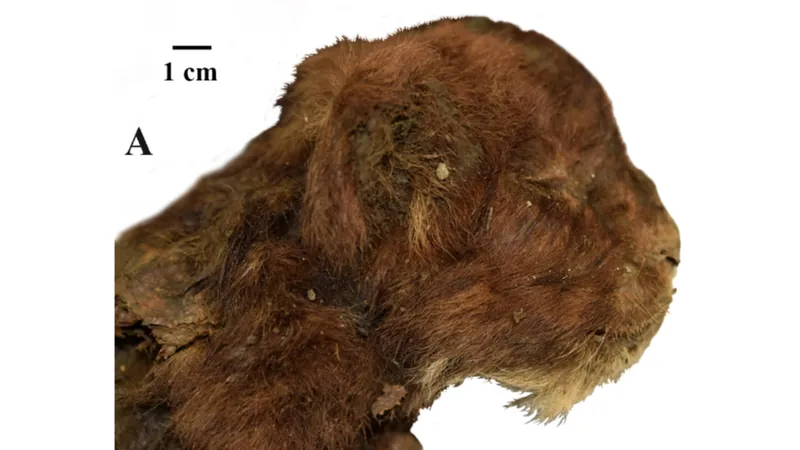
Unveiled After Millennia: A 35,000-Year-Old Saber-Toothed Kitten with Intact Whiskers Discovered in Siberia!
2024-11-15
Author: Yu
Groundbreaking Paleontological Discovery
In a groundbreaking paleontological discovery, scientists have successfully extracted the remarkably-preserved mummy of a newborn saber-toothed kitten from the unforgiving permafrost of Siberia, estimated to be at least 35,000 years old. The astonishing find, which still boasts intact whiskers and claws, has sent ripples of excitement through the scientific community.
Origins of the Discovery
The kitten was unearthed in the Sakha Republic—also known as Yakutia—an area renowned for its rich deposits of ancient remains. A recent detailed analysis revealed that this tiny predator was only three weeks old at the time of its death. Alongside the mummy, researchers also found pelvic bones and limb bones encased in a block of ice, although the circumstances behind its premature demise remain a mystery.
Scientific Significance
This particular saber-toothed cat belongs to the species *Homotherium latidens*, a genus that was believed to have become extinct from Eurasia by the Middle Pleistocene, roughly 770,000 to 126,000 years ago. However, the discovery in Yakutia significantly shifts this timeline, confirming the presence of *H. latidens* in the Late Pleistocene, which spanned from 126,000 to 11,700 years ago.
Insight into Adaptations
The mummy has provided critical insights into the adaptations that allowed *H. latidens* to thrive in Ice Age conditions. Researchers compared the specimen with a modern lion cub and noted that the saber-toothed kitten exhibited distinct features such as wider paws and an absence of carpal pads, traits that greatly facilitated movement through snow. Its plush, thick fur likely provided insulation against the biting polar chill of its ancient habitat.
Distinct Physical Characteristics
Notably, this research enhances our understanding of the saber-toothed cats' physical characteristics at a very young age. The findings reveal that even as a juvenile, the kitten exhibited traits like a larger mouth and longer forelimbs, characteristics that distinguish it from modern-day felines.
Radiocarbon Dating and Unique Features
Through radiocarbon dating, scientists estimate that this kitten has been entombed in permafrost for a staggering 35,000 to possibly 37,000 years. The remains were initially discovered along the banks of the Badyarikha River in 2020, and the ongoing analysis has allowed for a detailed description of its unique features, including fur texture, muzzle shape, and muscle distribution.
Preservation and Research Future
Even more striking, the kitten retained its sharp claws and whiskers, a testament to its incredible preservation. However, researchers noted that the mummy’s eyelashes had unfortunately not survived the millennia.
Looking Ahead
With this groundbreaking discovery, scholars are eager to delve deeper into the anatomical peculiarities of *H. latidens*. A follow-up paper is already in the works, where researchers promise to explore these features in greater detail, ensuring that this captivating glimpse into the distant past continues to enrich our understanding of prehistoric life.
Stay tuned for more updates on this sensational find that challenges our perceptions of ancient predators!



 Brasil (PT)
Brasil (PT)
 Canada (EN)
Canada (EN)
 Chile (ES)
Chile (ES)
 España (ES)
España (ES)
 France (FR)
France (FR)
 Hong Kong (EN)
Hong Kong (EN)
 Italia (IT)
Italia (IT)
 日本 (JA)
日本 (JA)
 Magyarország (HU)
Magyarország (HU)
 Norge (NO)
Norge (NO)
 Polska (PL)
Polska (PL)
 Schweiz (DE)
Schweiz (DE)
 Singapore (EN)
Singapore (EN)
 Sverige (SV)
Sverige (SV)
 Suomi (FI)
Suomi (FI)
 Türkiye (TR)
Türkiye (TR)